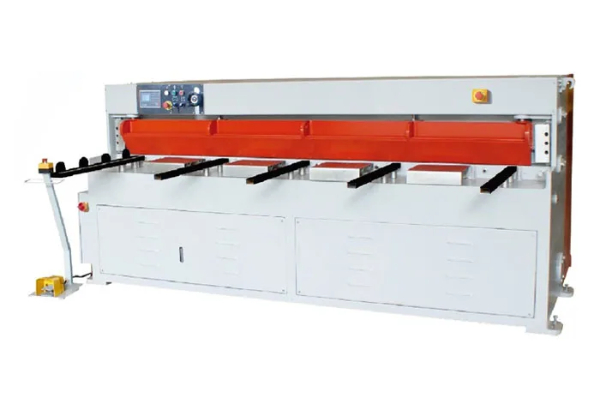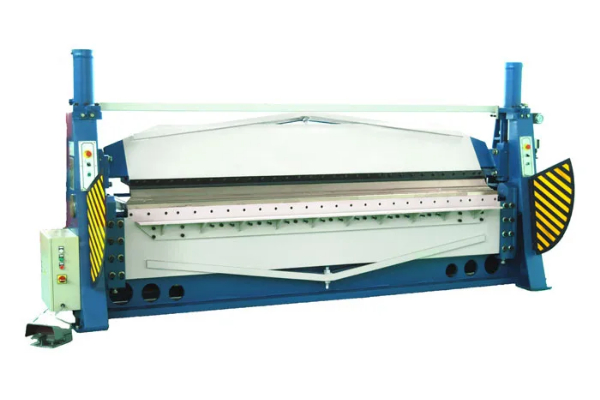
Press Brake 101- A Beginner’s Guide to Operating These Bending Powerhouses
- By:Metmac
- 2024-05-17
- 232
Press Brake 101: A Beginner’s Guide to Operating Bending Powerhouses
Welcome to the world of press brakes, where metal meets muscle, and intricate bends come to life. Press Brake 101 is your comprehensive guide to operating these bending powerhouses, enabling you to unlock their potential and master the art of metal forming.
Understanding Press Brakes
Press brakes are versatile machines designed to bend metal sheets into precise shapes and angles. They consist of two main components: a fixed upper beam and a movable lower beam. The lower beam applies controlled pressure to the metal, while the upper beam provides a rigid surface against which the metal is bent.
Setting Up Your Press Brake
1. Calibrating the Machine: Ensure the upper and lower beams are parallel and aligned. This ensures accurate bends and prevents damage.
2. Mounting Dies: Select the appropriate dies for your bending application. Dies come in various shapes and sizes, so choose the ones that will create the desired bend.
3. Positioning the Metal: Place the metal sheet between the dies and adjust the stroke length to the desired bending angle.
Bending Process
1. Actuating the Machine: Initiate the bending process by pressing the operation button. The lower beam descends, applying pressure to the metal sheet.
2. Bending the Metal: As the pressure increases, the metal sheet bends over the upper beam, forming the desired angle.
3. Controlling the Bend: Monitor the bending process and adjust the pressure or stroke length if necessary to achieve the desired result.
Safety Precautions
Operating press brakes requires utmost caution. Always adhere to these safety guidelines:
1. Wear Protective Gear: Protect yourself with gloves, eye protection, and proper clothing.
2. Inspect the Machine: Ensure the press brake is in good working condition before each use.
3. Clear the Work Area: Remove any obstacles from the work area to prevent accidents.
4. Avoid Touching Moving Parts: Keep hands away from the moving beams and dies during operation.
5. Unplug the Machine: Always disconnect the press brake from the power source before performing maintenance or repairs.
Troubleshooting Common Issues
1. Inaccurate Bends: Check the die alignment, calibration, and stroke length.
2. Die Damage: Inspect the dies for wear or damage. Replace them if necessary.
3. Overbending: Reduce the pressure or stroke length to avoid overbending the metal.
4. Springback: Anticipate the springback of the metal after bending and adjust the bending angle accordingly.
-
Reliable Sheet Metal Equipment for Sale to Support Precision Fabrication
2025/07/17 -
Advanced Duct Machine AC and Fabrication Solutions from Metmac
2025/07/12 -
The Advantages of Using a Sheet Roll Forming Machine in Manufacturing
2024/09/14 -
How to Optimize Your Laser Sheet Cutting Machine for Maximum Performance
2024/09/12
-
Efficient Sheet Metal Laser Cutting and Press Brake Solutions
2025/08/20 -
Advanced Sheet Metal Roll Forming Machines and Laser Cutting Solutions
2025/08/20 -
High-Performance Sheet Forming Machines for Industrial Applications
2025/08/20 -
Precision Steel Sheet Cutting and Bending Machines for Modern Metalworking
2025/08/14
-
A Guide to the Latest Innovations in Sheet Metal Folding Machines
2024/11/29 -
Key Features to Consider When Investing in a Sheet Metal Folding Machine
2024/11/28 -
Enhancing Precision with Advanced Sheet Metal Folding Machines
2024/11/27 -
How to Choose the Right Sheet Metal Folding Machine for Your Workshop
2024/11/26



